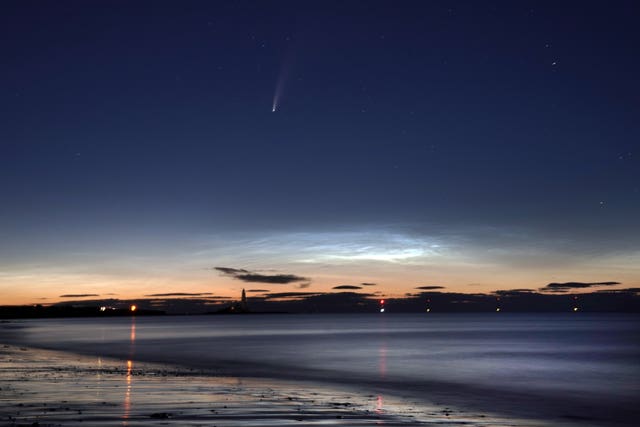Stargazers have been urged to marvel at a newly discovered comet which is visible to the naked eye this month as it will not be coming back for another 6,800 years.
The mountain-sized Neowise comet made its closest approach to the sun on 3 July and is now shining brightly in the night skies.
PA news agency photographer Owen Humphreys captured images of the comet lined up with St Mary’s Lighthouse in Whitley Bay, North Tyneside, at around 12.45am on Tuesday.

He said: “It was a lot brighter than I thought it would be, and you could see it clearly with the naked eye.
“The tail was visible, and there was the added bonus of the noctilucent clouds.”
Dr Robert Massey, from the Royal Astronomical Society, said Neowise was last in the inner Solar System 4,500 years ago and it was not expected to return for another 6,800 years.
Insomnia getting to you? Make the most of it and see if you can spot #cometNEOWISE now! Take a look at this video and find a window toward the north-west. Let us know if you spot it! pic.twitter.com/CKHLrc8xeW
— Royal Astronomical Society (@RoyalAstroSoc) July 14, 2020
He said: “I would encourage everyone to take a look if they can, if they have clear skies, and get away from light pollution if they can.”
Neowise, named after the telescope used to first spot it, should be visible for the next few weeks in the northern skies, near the bright star Capella.
Dr Massey recommended using binoculars to see more detail of the comet’s tail.















